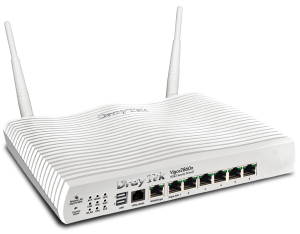Wi-Fi EasyMesh acquires new features in its second release
Articles – From the horse’s mouth

Telstra Smart Modem Generation 2 – the first carrier-supplied modem router to be certified as compatible with Wi-Fi EasyMesh
Wi-Fi Alliance
Wi-Fi CERTIFIED EasyMesh™ enables self-adapting Wi-Fi® (Press Release)
Technicolor
white-label manufacturer of carrier-supplied home-network modem routers
EasyMesh R2 Will Intelligently Manage Your Home Wi-Fi (Press Release)
Previous Coverage on HomeNetworking01.info about Wi-Fi EasyMesh
Wi-Fi defines a new standard for distributed wireless netowrks
Telstra is the first telco to supply home-network hardware that supports Wi-Fi EasyMesh
My Comments
The Wi-Fi EasyMesh standard that facilitates a distributed-Wi-Fi network without the need to have all equipment from the same equipment or chipset vendor has undergone a major revision. This revision, known as Release 2, is intended to improve network management, adaptability and security as well as supporting proper VLAN / multiple-ESSID operations that is especially required with guest, hotspot and community Wi-Fi applications.
What will Release 2 offer and how will it improve Wi-Fi EasyMesh?
Standardisation of diagnostic information sharing across the network
Wi-Fi EasyMesh Release 2 will make use of the Wi-Fi Data Elements to allow the Controller device to collect statistics and diagnostic information from each access point in a uniform manner. It doesn’t matter which vendors the different equipment in the EasyMesh-compliant Wi-Fi network come from.
Here, it will benefit companies like telcos, ISPs or IT support contractors in identifying where the weaknesses are in a Wi-Fi network that they provide support for. For those of us who support our own networks, we can use the tools provided with the main Wi-Fi router to identify what is going wrong with the setup.
Improved Wi-Fi radio channel management to assure service continuity
The second release of Wi-Fi EasyMesh will offer improved channel management and auto-tuning of the access point radio transceivers. This will make sure that the Wi-Fi network is able to adapt to new changes such as newer networks being setup nearby.
It wll also be about implementing DFS to make sure that Wi-Fi networks that use the 5 GHz bands are working as good neighbours to radar installations like weather radar located nearby and using those bands. This will happen not just on initial setup of any Wi-Fi EasyMesh node but continually which will be of concern when, for example, a local meteorological authority installs a new radar-based weather station in your neighbourhood.
Increased data security for the wireless backhaul
The wireless backhaul for a Wi-Fi EasyMesh R2 network will be more secure through the use of current Wi-Fi data-security protocols like Simultaneous Authentication Of Equals. There will even be the ability to support robust authentication mechanisms and newer stronger cryptographic protocols.
It is seen as necessary because the wireless backhaul is used as the main artery to convey all the network’s traffic between the access points and the main “edge” router. This can appeal to anyone who wishes to snoop on a user’s Internet traffic; and also conveys the fact that the Wi-Fi EasyMesh network is effectively a single LAN segment where all the data for Wi-Fi client devices moves around.
Secure wireless-backhaul support for VLAN-separated data traffic
Increasingly, home-network equipment is implementing VLAN technology for a range of reasons. One of these is to facilitate triple-play services and assure quality-of-service for IPTV and IP-based telephony services offered by the telco or ISP. The other is to facilitate guest/hotspot and community networks that use the same Internet service connection but are effectively isolated from the main home or small-business network.
This release of the Wi-Fi EasyMesh standard will support these setups by configuring each node to support the multiple virtual networks including their own separate extended-service-set configurations. The wireless backhaul will also be set up to create separate “traffic lanes” for each logical network that are securely isolated from each other.
Enhanced client steering
There will be the ability to steer client devices between access points, wavebands or channels to prevent one or more of these resources from being overloaded.
For example, it could be feasible to have dual-band client devices like most laptops, tablets and smartphones work on the 5GHz band if they are dealing with multimedia while keeping the 2.4GHz band for low-traffic needs and single-band devices. Similarly, if a client device “sees” two access points equally, it could be made to use whichever one isn’t being overloaded or has the batter throughput.
Of course, the enhanced client steering will provide a seamless roaming experience similar to what happens with the cellular-based mobile telephony/broadband networks that power our smartphones. This is a feature that is of importance with any device that is highly-portable in nature like a smartphone, tablet or laptop.
Key issues that may surface with Wi-Fi EasyMesh
A key issue that may crop up with Wi-Fi EasyMesh is supporting the use of multiple backhauls across the same network and offering “true-mesh” operation rather than hub-and-spoke operation. Here, it could be about opening up options for load-balancing and increased throughput for the backhaul or providing fault-tolerance for the network.
As well, the idea of a wired backhaul implementing IEEE 1905.1 small-network management technology has to be kept in scope when designing Wi-Fi EasyMesh devices or promoting and implementing this standard. This is more so to encourage HomePlug AV2 or G.Hn powerline-network technology as a companion “wired no-new-wires” backhaul approach for deploying satellite nodes in areas where a wireless backhaul may not perform to expectation but it would be costly or unfeasible to pull Ethernet cable across the premises.
How can this be deployed with existing Wi-Fi EasyMesh networks
There are measures built in to the Release 2 specifications to permit backward compatibility with legacy Wi-Fi EasyMesh network-infrastructure devices like the Telstra Smart Modem Generation 2 that exist in the network.
As well, some vendors are taking the approach of implementing the Release 2 functionality as software form. This makes it feasible for them to bake this functionality in to a firmware update for an existing EasyMesh-compliant router or access point without the need to worry about the device’s underlying hardware.
Conclusion
I see Wi-Fi EasyMesh Release 2 as offering the chance for Wi-Fi EasyMesh to mature as a standard for distributed-Wi-Fi setups within the home and small-business user space. This release may even make it affordable for small businesses to dabble with a basic managed distributed-Wi-Fi setup due to not being required to stay with a particular vendor/





